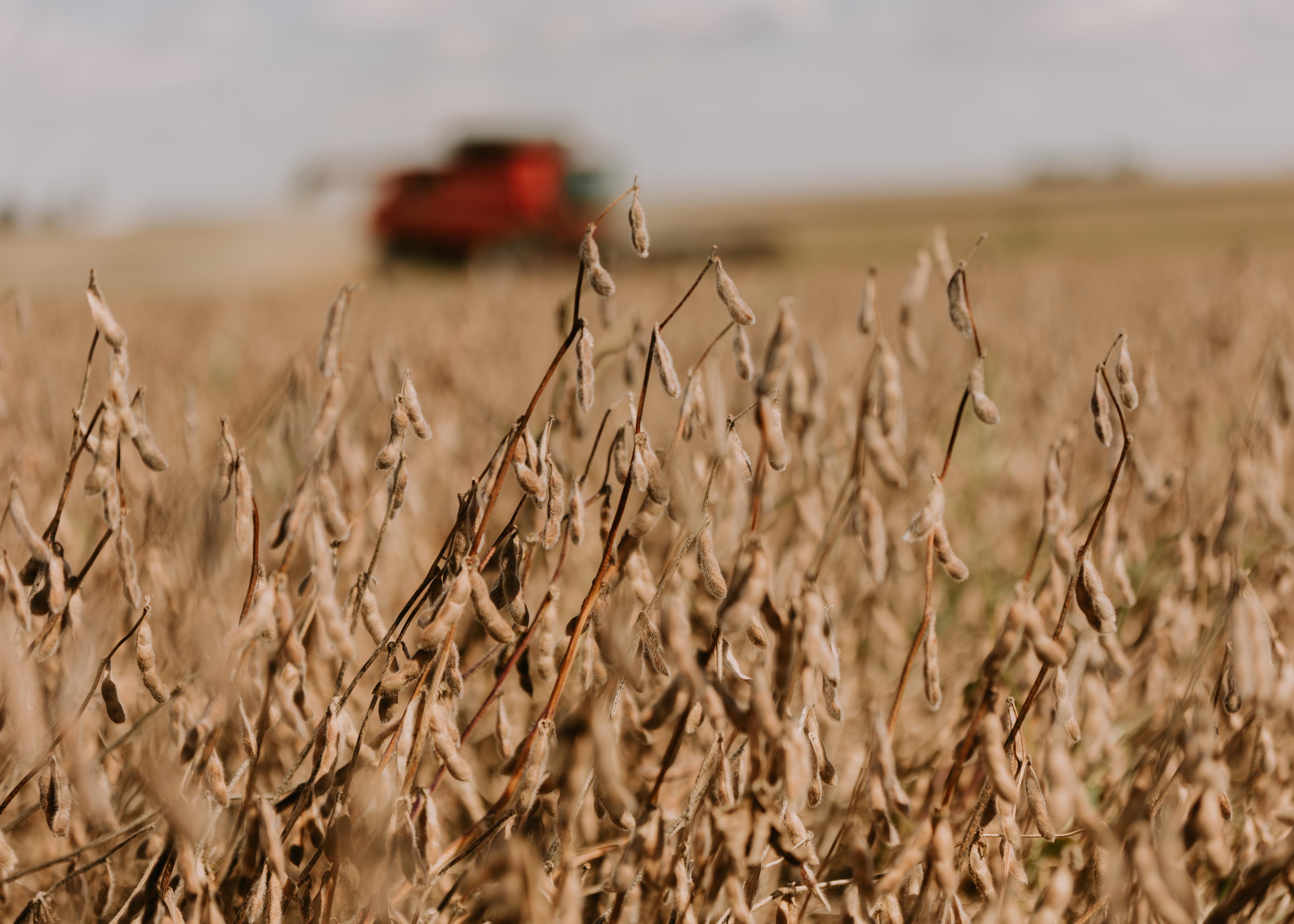
Iowa farmers harvested a record crop in 2021. Soy experts broke down various components of the soybean market during a Jan. 20 webinar. (Photo: Joclyn Bushman/Iowa Soybean Association)
Key takeaways from the ISA economic webinar
January 20, 2022 | Bethany Baratta
Soybean market experts shared insights regarding export markets, fertilizer pricing and expanding opportunities like renewable diesel during an hourlong webinar on Jan. 20 powered by the Iowa Soybean Association.
Export markets
The USDA’s recent reports—the World Agricultural Supply and Demand Estimates (WASDE) report and the crop production reports—made minor changes to U.S. soybean supplies.
However, Mac Marshall, vice president for market intelligence for the United Soybean Board and the U.S. Soybean Export Council, says he’s eyeing the effects of drought in South America and what impact that has on global soy supplies and projected U.S. soy exports. Will the crop rebound, or will the drought limit soy production there?
Brazilian soybean farmers planted a record 99.7 million acres of soybeans, and farmers have started harvesting their soybean crops. While the northern part of the country has received sufficient precipitation, the southern part experienced drought. The expected record crop of 144 million metric tons (5.29 billion bushels) has been shrinking. The January WASDE report shaved 5 million metric tons off the expected harvest to 139 million metric tons (4.53 billion bushels). Even so, this would surpass the previous record set last year of 138 million metric tons (5 billion bushels), noted Scott Gerlt, economist for the American Soybean Association.
Argentina's soybean crop was reduced by 3 million metric tons to 46.5 million metric tons (1.7 billion bushels) due to dry conditions. Gerlt notes that the Parana River, on which 80% of Argentina’s ag exports are carried is experiencing a record plunge due to the same hot, dry conditions. As a result, cargo loads are being cut by 30%.
Paraguay is also expected to produce fewer soybeans; its production was cut 1.5 million metric tons to 8 million metric tons (293.9 million bushels).
“There’s always the potential—particularly as the market trades on weather—that before we get the crop in the ground that it could be bearish on price,” Marshall says.
China is a bit of a mixed bag, Gerlt says.
African swine fever cut China’s pig population in half, thereby reducing its need for soybeans. The herd is recovering, but economic returns to China’s pig farmers are below profitable levels. China recently cut its corn purchases in an effort to become more self-sufficient. Will the rebalancing of the hog herd and supplies affect China’s need for U.S. soy?
The Phase One agreement between the United States and China set purchase targets of U.S. goods (including ag products like soybeans) by China for 2020 and 2021. However, China imported 76% of the two-year ag commitment with one more month of data left to compute the total. However, Gerlt says the Phase One agreement states, “purchases will be made at market prices based on commercial considerations,” which allowed some flexibility toward meeting the targets. The agreement also projects that the countries will maintain the trade trajectories in 2022 through 2025. Gerlt says this increases uncertainty about what trade may look like after 2025.
Gerlt expects China, the top market for U.S. soybeans, will call on the U.S. to supply soybeans when they need it.
Fertilizers and inputs
Gerlt says several factors are at play in the availability and pricing of fertilizers and other essential inputs. High natural gas prices, restrictions, and export bans of fertilizers, an overall “very complicated trade situation,” the lack of shipping containers, trucker shortages, and the impacts of COVID-19 are all playing into higher input prices.
“It’s hard to know how long this will take to unwind,” Gerlt says. “I don’t see it resolved in month or two. Some of these factors are here to stay for a while.”
Gerlt and Marshall expect the higher prices to continue for a few growing seasons.
Renewable diesel
Biodiesel, renewable diesel, and sustainable aviation fuel will be recognized as mainstream low-carbon fuel options with superior performance and emission characteristics. In on road, off road, air transportation, electricity generation, and home heating applications, use will exceed 6 billion gallons by 2030, eliminating more than 35 million metric tons of carbon dioxide equivalent greenhouse gas emissions annually.
Those fuels will rely on feedstocks, include soybeans, to respond to expected increases in demand. But it won’t be all on soybeans to produce the necessary feedstocks.
With advancements in feedstocks, use of biodiesel, renewable diesel and sustainable aviation fuel is projected to reach 15 billion gallons by 2050.
Grant Kimberley, director of market development for the Iowa Soybean Association, doesn’t expect for soybeans to ‘lose’ in the alternative fuels arena. He noted that areas with low carbon fuel standards utilize biodiesel in their fuel mixes to reduce the carbon intensity and increase lubricity of their fuels. For example, some fuel uses a combination of renewable diesel and biodiesel. Biodiesel is also displacing petroleum in the home heating oil sector in the Northeast.
“We can’t really lose too much as long as we see a growing pie for all of these markets to grow,” he says.
There’s a need for additional soy crushing to also meet the demands of the growing fuels space, Kimberley says. The addition of Shell Rock Soy Processing LLC in Shell Rock, Iowa, is a good start, Marshall says. The Shell Rock plant will crush approximately 40 million bushels of soybeans a year. It will also produce more than 900,000 tons of soybean meal and hulls for livestock feed per year. It’s expected to be operational later this year.
To watch the webinar in its entirety, go to https://www.youtube.com/watch?v=ozRUVT_aODo or watch below.
To learn more about the economics of soybean farming, opportunities for farmers, and how ISA’s Research Center for Farming Innovation (RCFI) is working to make farmers more profitable and productive, attend the Innovation to Profit Conference on Feb. 17 in Ankeny.
Back